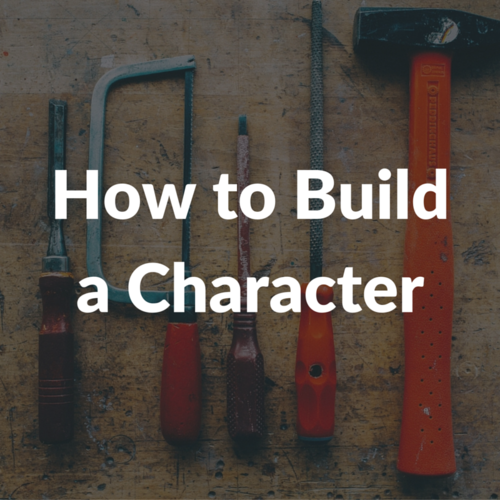How well do you know your characters?
Are you as intimate with them as you should be?
Coming up with a character is easy. You give them a name, an occupation, and a reason for visiting your story. Developing that character into a living, breathing, vital aspect of your manuscript, one that successfully propels your story forward, is another phenomenon entirely.
There are a few things that are an absolute for me when I develop a character.
The most important is a name.
As I begin writing a new manuscript, I make a cast list. All the main characters are there, as well as all the secondary characters. Everyone who is going to make an appearance in the story is named and accounted for.
A couple of rules that I like to follow when it comes to developing character names:
Make the name pronounceable.
Especially for secondary and tertiary characters, make their name fit. If you’re writing a story about white slavery, an unhappy stripper named Tatiana will convey the message more effectively than an unhappy stripper named Jane.
Where do the names come from? I’ll admit, there have been the times, (in the past, of course, cough, cough) I’ve been in a pinch and looked to my reference bookshelf. I pick a first name and last name at random. Problem is, when you’ve been working on a manuscript for four straight months with the same bookshelf of reference material, you’re going to duplicate yourself. I was caught by one of my readers. I’d used Richard Curtis and Curtis Richard. For shame. Now, I use every available resource. Magazines like Maxim and FHM always have great names. There are websites that use algorithms to mix and match names to degree. You get the drift – finding sources to pull from is easy.
Since I generally write series novels back to back, I’m intimately familiar with my main characters and the people they work with on a daily basis. Secondary characters that are making their second or third appearance are simple to keep up with. But the new primary and secondary characters need defining, and I need a new list of tertiary characters and one-timer throw-in names.
My very first step is to build the list of names.
In my new book, there is a big cast of secondary characters. A big cast. My list has sixty-eight new character names on it. I know I’ll use up at least twenty-eight right off the bat. I have a new character who has a whole team behind her, so there’s another nine. See where I’m going? I never want to be left out in the cold when it comes to naming my characters.
Unfortunately, as well intentioned as I am with my cast list, there are characters who pop up unexpectedly and announce, “Hey, I’m here. This is what I’m going to do to wreck havoc on your story. But I need a name, please.” Hence, the pre-built characters list.
What works for me is to name my secondary characters off the bat, but leave some of the tertiaries for later. That way I can satisfy my spontaneity gene and grab a name at random a few times through the book. Now that I’m a little wiser, I only take it from the proscribed list of tertiary character names, rather than inventing off the top of my head.
But what’s in a name? There needs to be more to make a character come alive.
Some characters are so big and bold, they parade right out of your mind onto the page with no effort. Some need to be coaxed a bit. For the reluctant characters, there are a few absolutes that must be answered before they get to show up in print.
The first things I decide on are age, hair color and eye color (subsequent to race), height, weight, and level of education.
While it’s generally easy to define a character by social class and educational status, I have the joy of writing books that are based in Nashville, Tennessee. This is a southern town, and there are many colloquialisms here that can be misinterpreted by outsiders. Brilliant, well-educated people here use terms that Yankees would deem dim-witted at best. I try to be especially careful when I dip into that particular well. It’s a unique issue that’s been written about by many more capable writers than I. Suffice it to say you need to be aware if you’re writing regionally specific characters.
Back to building a character. Age, looks, race, education and socio-economic status are first. Those are the main ingredients for me.
Now it’s on to the spices.
I can’t say that I do the same thing for each character. Some have more information on them than others. Some I know how they walk, what they wear, how their hair is styled, whether they are straight or gay, who their family is. Some I just have a mental picture of who they are. If they are a one-timer, I try to be cognizant of their surroundings, so the character can help me set the scene.
One of my writer buddies, Jennifer Brooks, came up with a brilliant idea while writing a book with an omniscient POV and several main characters. The BMW’s (my critique group) were having trouble keeping all of them straight, and we badgered her to do something about our inability to “get” who was who. (Many times, POV problems are a result of not knowing your characters as well as you should. If you know exactly how your character will react in a certain situation, what they’ll say, how they’ll feel, your POV will fall into place.)
Have you ever been sent an email survey by one of your friends, the kind that has a huge list of questions that either you or said friend must fill out? They ask detailed questions that are meant to show how much you really know someone.
My friend, in all her brilliant glory, decided to fill out the survey as her characters. Since many of her characters are in relationships or strong friendships, she allowed the characters themselves to ask the questions of their friends and lovers. It gave her a stronger grasp of who each character is and how they can be presented in the story to help us, the readers, keep them straight. It worked wonderfully.
Another quick note on character building.
One of the most important questions I ask each of my characters is, “What do you mean to the story?”
A tertiary or one-time, one-scene character can steal the show. Let me rephrase that. They should steal the show. I try to make my one-timers feel special. Give them something important to do or say. You should never have a character who doesn’t advance the story in one way or another.
Sometimes, even these tricks aren’t enough to really give you a sense of who your characters are. Since we’re talking crime novels here, let me point out that victimologies are vital to the success of your book. If you don’t have a victim, you don’t have a crime, and you don’t have a book. Making sure your victims are as well developed as your speaking characters – it makes a big difference.
I tried something a little different in my first manuscript. I had several girls who were killed. They were all in different states, and they shared a physical resemblance. I was struggling with their deaths, mainly because it’s so hard to kill someone in a book, no matter how gleefully we might go about it. There was one that I felt so close to, it hurt me to kill her. My protagonist was struggling with the issue, just as I was. I had him on a plane, desolate, looking at the MISSING posters that accompanied each girl’s disappearance. I envisioned him getting off the plane, going into his office and tacking up the MISSING posters. Hmmm.
The next thing I knew, I was up to my, ahem, elbows, in imaginary dead girls. There are a couple of glossy color magazines here in town, so I went out and bought them, looked to the society pages, and cut out pictures of girls that fit the killer’s profile. I then mocked up the MISSING posters. Based on actual fliers from the National Center for Missing and Exploited Children website, they each had a picture of the victim, all her particulars, where she was last seen – all the information I needed to use to drive the story and build the plot.
Since that worked so well for me, and my second manuscript had the same kind of situation, so I took the time and picked out my victims. In the manuscript, these pictures go in a dossier for the antagonist to peruse. They go in a dossier in my files as well, so I can experience what my character experiences as he looks at them.This has been one of the most successful tricks I’ve learned.
Dead characters deserve as much respect as living characters.
Bringing them to life makes it harder to kill them off, but the goal is to create believable, sustainable characters for your readers. And you'll stay away from being gratuitously mean to them, which is the goal.
I also make my setting, Nashville, a character unto itself. I know people have received those constructive rejection letters that claim the reader didn’t get a good “sense of place”. Make sure your setting is a character just like your protagonists and antagonist, and you’ll never hear that again. Get to know your characters, and they’ll never let you down.
Here’s a deep dive into my process…
NYT bestselling author J.T. Ellison discusses creating characters.







